What has not happened this week. Google's attempt to deal with compulsive subscriptions on Google Play alone is worth a lot. It's a pity that the company was too smart and made it only worse. But Huawei is almost ready to officially release EMUI 10.1 to the global market, and along with it Magic UI 3.1 for smartphones Honor. And of course, we could not pass by the new feature Android 11, which will allow you to easily transfer files to a computer running any operating system. All of this and more will be discussed in our traditional final newsgroup.

Anything new is almost always good.
Android 11 will allow you to send data to your computer
Despite the fact that this year Google decided not to hold any events dedicated to Android 11, through the efforts of testers and developers, we already know about almost all the innovations of the update. Among them, there are quite a few functions that were found in one form or another in iOS, and this is very striking. Because of this, you may even get the impression that Google has decided, without further ado, just lick everything off Apple. After all, the same technology for transferring data over short distances Nearby Sharing is a direct copy of AirDrop. It even works on the same principle. But, as it turned out, Google decided to go beyond its competitor.
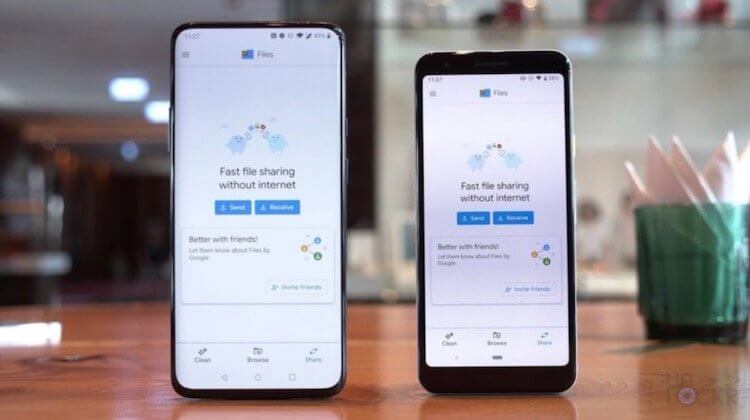
Android learn to exchange files with computers
Nearby Sharing will be able to work not only with devices on Android, but also on macOS, Windows, Linux and Chrome OS. Relevant references were found in the program code Chrome OS, for which Google is already adapting a new data transfer technology. Moreover, it is obvious that the optimization process is at the final stage, because users with developer rights can already activate it. However, due to the fact that Nearby Sharing is still inactive on Android, unfortunately, data transfer will not work yet.
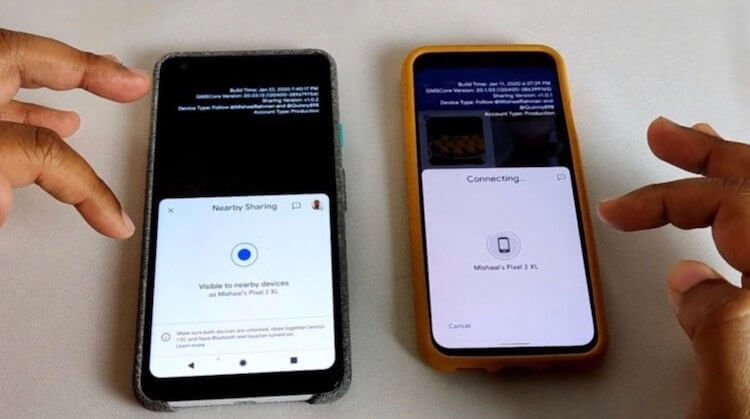
Nearby Sharing is like AirDrop, only better
It is noteworthy that Google plans to unite not only its own platforms, but also those of others using Nearby Sharing. MacOS looks especially unusual on this list, which Apple has always carefully guarded against outside intrusion and severely limited independent developers in their efforts to expand the capabilities of their operating system. So it will be interesting to see how Google manages to bring Nearby Sharing support to the Mac. Perhaps the company will simply come to an agreement with Apple, especially since they already have experience of joint work on software products. Or, it is possible that the technology is simply implemented in an application that macOS users will install on their computers.

Nearby Sharing will be released with Android 11, but this is not accurate
If Google really manages to unite different platforms, including desktop ones, using Nearby Sharing, it will be a real victory. Indeed, until now, the proprietary technology of the search giant looked frankly weak compared to its main competitor, AirDrop. The solution Apple was preferable because it covered a really wide range of devices regardless of platform and age, and Nearby Sharing will obviously only work with smartphones based on Android 11, which is strong will limit the scope of its application. However, supporting computers inevitably increases the potential of the technology.
It is unknown when Nearby Sharing will become available to users. Most likely, Google will launch the technology simultaneously with the release of Android 11, but there is no reliable information on the timing of the update yet. Given that the company had to postpone the launch of beta testing twice Android 11, it is likely that the new version of the OS will become available for download by the end of November, and even then only to owners of Google Pixel smartphones. But even in this case, there is no guarantee that Google will have time to complete the preparation of the technology for launch and will not postpone it indefinitely.
New camera for Samsung smartphones
While many Chinese manufacturers are just trying to figure out how to cram as much as possible into a smartphone camera so that each focal length has its own lens, some other companies are going their own way. For example, Huawei (although it is Chinese) tries to focus on the size of the sensor. Samsung also goes its own way and often tries to offer something new. For example, a sensor with a resolution greater than 100 megapixels. I have a special relationship with it and I am not inclined to exaggerate its importance, but the new feeder chamber, which the company recently patented, is really interesting. She can take cameras to a new level even because it just didn't happen. It may be worse, better, or no change, but it will definitely be new.

The camera is the most important part of a smartphone for most users.
Nowadays, when we see a phone with one camera, we do not even think that it can cost more than 10,000 rubles. The only exceptions are a couple of models iPhone and the Google Pixel 3a. You won't even be able to come up with more examples on the fly.
But there are examples of the opposite, when Jinga offers a smartphone for 4000 rubles, on the box of which “Dual Camera Design” proudly flaunts. This does not mean that the smartphone has two cameras. He just has two camera windows, in one of which there is a sensor, and in the other – just a picture of the sensor, that is, a dummy. Great, isn't it? This is not even the case when a flash is inserted instead of the second module. This is at least not a deception, but a design move, which, however, has a completely understandable meaning.
More expensive devices must have at least three cameras, otherwise the buyer will simply refuse them. Even iPhone is already available with three cameras, which is not typical for him.
Against the background of all this, Samsung, apparently, decided to reconsider its approach to the camera and not to chase a large number of sensors, but to rely on a technological solution to the camera design, and not the number of windows or sensor resolution. The camera should now tilt.

We need such a patent!
The full patent can be found here, and above you see the most interesting of what it contains – in fact, the very design of the camera. The pictures show what Samsung is trying to do. The camera lenses are flat when not needed, but can then tilt back and forth when needed. The slope is not some kind of mystical feature and it has a very specific meaning. This creates different points of view. In theory, this could dramatically change the image that the phone captures. You can either achieve interesting distortion effects, or simply expand the field of view, making the picture almost panoramic.
In one of the positions, the image can be obtained in the style of a fisheye lens. Also, with the help of special processing by hardware and software of the smartphone, you can even achieve an increase in the resolution of the image without the need to install a more complex sensor.
It is impossible to say exactly how the cameras will work, since this is only a patent, but most likely, if the idea is realized, something really interesting awaits us. Nowhere is it reported that modules of this design will shoot this or that image. It is also not reported how the mechanism for changing the angle of the location of the modules themselves will be implemented. In this situation, we can only assume that they will be able to move themselves due to the built-in drives. This would be a much more logical decision than another option in which you have to do everything by hand. In this case, it would be more difficult for the camera to process the image and changing would be very difficult. Elementary, it would lead to smudging of the lenses.

This should be interesting.
At the moment, we cannot talk about which smartphone this system will appear in and when it will be. Only one thing is clear – Samsung is interested in this technology and admits that it or someone else will release it to the market.
Here you must also understand the specifics of such cameras. Firstly, they will move, and these are unnecessary elements that can affect the water resistance or simply make the smartphone less resistant to drops. I'm not even talking about the dirt that can get under the cameras.

And there will be six more cameras.
Secondly, the use of this design will increase the thickness of the smartphone. You can do without this, but then you have to decide something with the current components or modern cameras. The cameras are already cramped in the body of the devices, because of this, they climbed out like acne. What will happen if the camera is separated into a separate body (and it should be) and make it move?
All this is very interesting and mysterious, but now, when we ask you to tell us in our Telegram chat which smartphone camera you would like to see in the new model, you will have a direction in which you need to think. Samsung will also think. With a high degree of probability, we can say that there will be no such camera for at least another two years, but, as they say, wait and see. So far, this is only a patent.
When will EMUI 10.1 and Magic UI 3.1 be released
Our country is very fond of the company's products Huawei. This is easy to track not only in sales statistics, but also in our Telegram chat, where this topic is discussed very often and hotly. That is why the release of a new operating system is always, albeit small, an event that users around the world are waiting for. Now their time has come and they have waited. The company Huawei has finally rolled out EMUI 10.1 firmware for many of its compatible smartphones around the world. And at the same time I prepared firmware updates for Magic UI 3.1 for smartphones Honor. Now many more people will be able to update, and their smartphones will work in a new way.

Very soon, it will be available on a huge number of smartphones.
As with all new things, the updated firmware of a smartphone or tablet always brings some kind of new user experience. More often than not, updates are not limited to “cosmetics”, which sometimes also take the interface to a new level. Often whole menus and windows change in firmware. It is these gradual improvements that have led to the fact that now, even on small smartphone screens, everything looks very informative. It is not for nothing that hundreds and thousands of the world's best psychologists, designers and marketers work every day for this. I talked about the advantages of a small screen and about my unwillingness to buy a “shovel” in this article and gave many arguments in favor of a small smartphone.
In addition to interface updates, new functions are also emerging, some of which are based on information collected from forums and thematic portals, including our Telegram chat. All of them sometimes make us think that we have almost a new phone in our hands, and if we also clean it inside and out, then the sensations will generally be “like new”.
But what interesting Huawei has added to its new firmware and why should it be downloaded by everyone who uses more or less relevant smartphones Huawei and Honor? Maybe you shouldn't install it at all and it's better to use what you already have, so as not to make it worse according to the principle “works – don't touch”. Let's look at this question.
Huawei announced a global update to EMUI 10.1 for their phones. As I said, this is a joint update for Huawei and HONOR, so users will be able to download both EMUI 10.1 and Magic UI 3.1.

Honor will get the update too.
EMUI 10.1 was announced back in March along with Huawei P40 series devices. This EMUI build brought a number of improvements, although some of them were somewhat hidden from users.
The company announced that a large number of smartphones will receive this update starting later this month. Therefore, you will have to wait a bit, but soon everything will be and the company is already completing work in this direction, so the bill went into days.
As for the models Huawei and Honor that will receive updates, you can see their list below.
Which smartphones Huawei will update to EMUI 10.1
- Huawei P30
- Huawei P30 Pro
- Huawei Mate 20
- Huawei Mate 20 Pro
- Huawei Porsche Design Mate 20 RS
- Huawei Mate 20 X
- Huawei Mate 20 X (5G)
- Huawei nova 5T
- Huawei Mate Xs
- Huawei P40 lite
- Huawei nova 7i
- Huawei Mate 30
- Huawei Mate 30 Pro
- Huawei Mate 30 Pro 5G
- Huawei MatePad Pro
- Huawei MediaPad M6 10.8
Which HONOR smartphones will get Magic UI 3.1
- HONOR View30 Pro
- HONOR 20
- HONOR 20 Pro
- HONOR View20
In EMUI 10, the company Huawei launched the AOD (Always On Display) feature. EMUI 10.1 also keeps 3D rendering always on, which allows for better graphics when displaying complex textures.
Three new fingerprint unlocking animations will also arrive alongside EMUI 10.1, the company said. These animations were inspired by the elements of poetry: earth, fire and water.
A new multi-window feature has also been added in the form of the Multi-Window function. You can work with two applications at the same time, as well as drag images, text and files between the two windows. It may not always be convenient on a small smartphone screen, but many will come in handy. At least on tablets it should go with a bang.
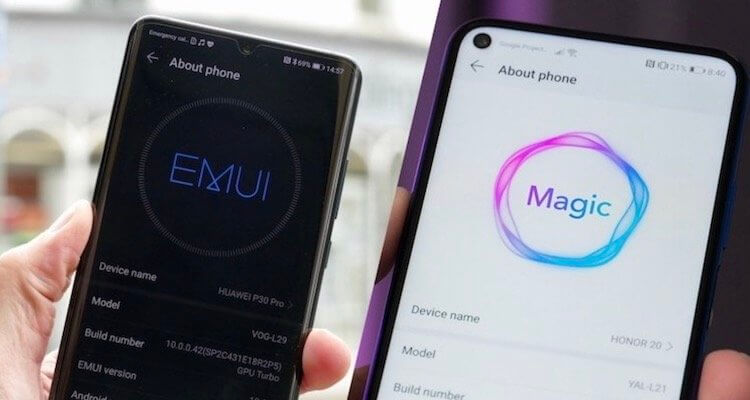
New firmware Huawei and Honor are always of interest.
The animation in the new firmware will become smoother thanks to new processing mechanisms. This applies to all system menus, including the side menu. I had no particular complaints about this, but since the company did it, it means that it sees a problem in this and understands that it did not fully work out this issue in its time.
This update also adds Huawei MeeTime. It is a native video calling app Huawei which has many features. This app supports FullHD video calling between devices Huawei. It turns out that the application will not be cross-platform, so it can be considered an analogue of FaceTime from Apple.
Improvements Huawei Share are also included in this update. At first, it was possible to transfer data between smartphones and PCs. But now you can do the same between your smartphone and other devices, including other smartphones, PCs, smart speakers, tablets, and so on.
Multi-screen collaboration has been improved while a photo gallery feature has been added that syncs across devices. Also in this update will debut its own head assistant Huawei under the name 'Celia'.
Well, we can say that the update is significant. Although this is not the next version of the firmware, but only its addition, it still turned out very well and, apparently, it is necessary to update.
A new port of Google camera has been released for Android
The best smartphone is from Apple, the best operating system is from Apple, the best payment service is also from Apple. In this whirlpool of total superiority of the Cupertino company, Google, there is practically no place left. After all, Android, Pixel, and Google Pay, whatever one may say, were inferior to their main competitors in almost everything. The only white swan in this swamp, whose authority no one dares to dispute, was the Google camera, which users Android have always tried to get by hook or by crook. Now they have the opportunity to install the updated version.
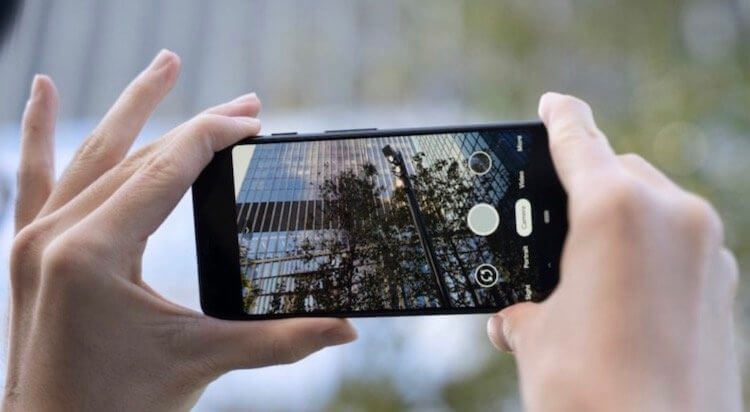
Google Camera has a new mod that is compatible with a large number of smartphones
If you do not understand what a Google camera is, then here is an explanation for you in a nutshell. 'Google Camera' or Google Camera is Google's proprietary camera app and is officially only available on Pixel smartphones. It is unique for its add-ons and advanced feature set that allow it to push the quality of photos to a fairly high level with relatively weak hardware. Despite the limited availability, independent developers are hacking the Google camera and porting it to other smartphones at Android.

Gcam was originally intended only for Pixel smartphones, but the developers ported it for other devices
Recently, a group of enthusiasts have developed a new Google Camera port called the GCam Ultra CVM Mod. It retains the original add-ons and functions of the original application, but at the same time received an improved interface, as well as a number of additional mechanisms like shutter and exposure control, pinpoint focus adjustment, shooting in RAW format, etc. However, its distinctive feature is support for a wide range of devices, which the previous Google camera port could not boast of.
Which phones support Google camera
- Galaxy S10 / S10e / S10 +
- Galaxy Note 10 / Note 10 / Note 10 Lite
- Galaxy S20 / S20 + / S20 Ultra
- Galaxy S9 / S9 +
- Galaxy S8 / S8 +
- OnePlus 8/8 Pro
- OnePlus 7/7 Pro
- OnePlus 7T / 7T Pro
- Poco F2 Pro
- Poco X2
- Pocophone F1
- Redmi Note 8
- Redmi Note 7 / Note 7 Pro
- Xiaomi Mi 9T / Mi 9T Pro
- Moto X4
- Moto G7
- Moto g6
- LG V20 / V30
- LG G8 / G7 / G6
As you can see, the list of compatible smartphones is quite extensive, and here only those models are listed on which the new Google Camera mod is guaranteed to work. But this does not mean that the application will not start on other devices – it will most likely start, but for this it must have Camera2 API support. Therefore, if the application does start, it is possible that it will not have some functions, or it will work, but not as well as on compatible models, or, which, by the way, is also quite likely – it will work perfectly fine without any problems.
How to download Google Camera
- Download the GCam Ultra CVM Mod APK from this link;
- Run the installation file and confirm the installation;

It's very easy to install Gcam on your smartphone
- Go to the application and check its work;
- If errors were found during the work, download the patch with bug fixes from this link and use GCam for your pleasure.
I tried installing GCam on myself on Honor View 20, but for some reason every time I tried to launch the application, it crashed. Therefore, unfortunately, I could not test it personally. But, on the other hand, this was to be expected, since my smartphone was not among the supported models, and it does not have support for the Camera2 API. Most likely, the specific hardware affected, because, as you know, smartphones Huawei and Honor operate on the basis of Kirin processors, which are very different from Exynos and Qualcomm. But if you find a working port for these smartphones, let me know.
Google failed to improve subscriptions to Android
I think I won't be mistaken if I say that millions of users have already become victims of subscriptions. Obviously, the reason for this sacrifice was their own inattention, but, one way or another, there are a lot of those who did not notice and subscribe or subscribe and forgot to unsubscribe, and then lost a fair amount of money. Developers also take advantage of this, shoving a subscription tool even into applications for which it is generally not accepted to pay, such as a calendar or a calculator. But since Google could not prevent developers from asking for money for their work, it began to warn users about subscribing immediately, albeit not quite as it should.

Google seems to have protected users, but it seems not
An additional button 'Try for free', which is located next to the usual 'Install' button, began to appear on the application pages in Google Play. They differ in that the first one allows you to download a version with an already issued trial subscription. And for convenience, Google put out a card with the terms of paid access right under the installation buttons, listing the main aspects of the subscription there. Here you can see its cost, validity period, as well as the privileges that the user will receive if they pay. Thus, it will be possible to decide 'on the shore' whether it is worthwhile to subscribe at all and pay the amount requested by the developer.

Try to guess which button you need to press in order not to lose money
The usual 'Install' button will install the free version as it did before. That is, a user receives an application without an activated trial subscription, tests it, and then decides whether to subscribe at all or not. In theory, this is a very convenient division that kills three birds with one stone:
- Users immediately get the opportunity to choose the paid or free version of the application;
- Developers get more subscriptions and fewer refund requests for mistaken subscriptions;
- Google gets more commissions from subscription sales, which range from 15 to 30%.
Another thing is that so far all this has not been implemented quite at the level that I, as a user, could count on. First, the current incarnation is not very obvious. That is, if you do not know in advance what 'Install' means, and what 'Try for free' means, you may get the wrong impression. Secondly, for now, the addition of the 'Try for free' button along with the card describing the subscription is added only at the initiative of the developer, who may refuse. Thirdly, it is not entirely clear how to 'roll back' everything back if the user changes his mind. After all, if I immediately signed up for a trial subscription, I will have to cancel it in the old way in the settings, and this is not obvious to everyone.
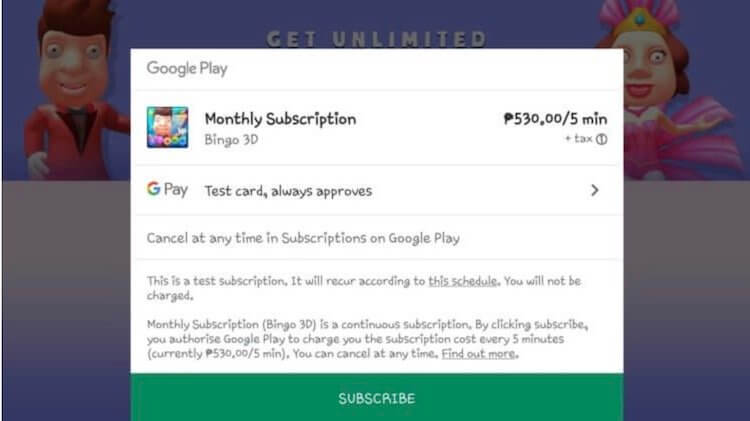
Subscriptions, as they were harm to inattentive users, will remain for them
Will what Google has to offer help you fight subscriptions? Perhaps, but only on condition that the company prescribes the installation conditions more clearly, will oblige all developers to add a description of the subscription and monitor their compliance with real conditions, and also add a convenient tool for canceling the subscription. Practice shows that many users simply cannot cancel their subscription, because they do not know where to find the appropriate button, and then lose money until someone tells them.
- To cancel your subscription, launch Google Play;
- Open the side menu with a swipe from left to right;
- Go to 'Subscriptions';
- Find the subscription you want to cancel and close it.
So far, it looks like Google just decided to increase its revenue a little. After all, it is logical that most users will click on the 'Try for free' button, since it already contains the word 'free' (at least I would click on it). So, if you follow the logic, you will not be charged for using the application, but in fact this is a trap, because everything is exactly the opposite. The first 3-7 days, money is really not debited, however, after their expiration, the fee for a month or even a year will be written off in one fell swoop. But Google will still receive its commission.
